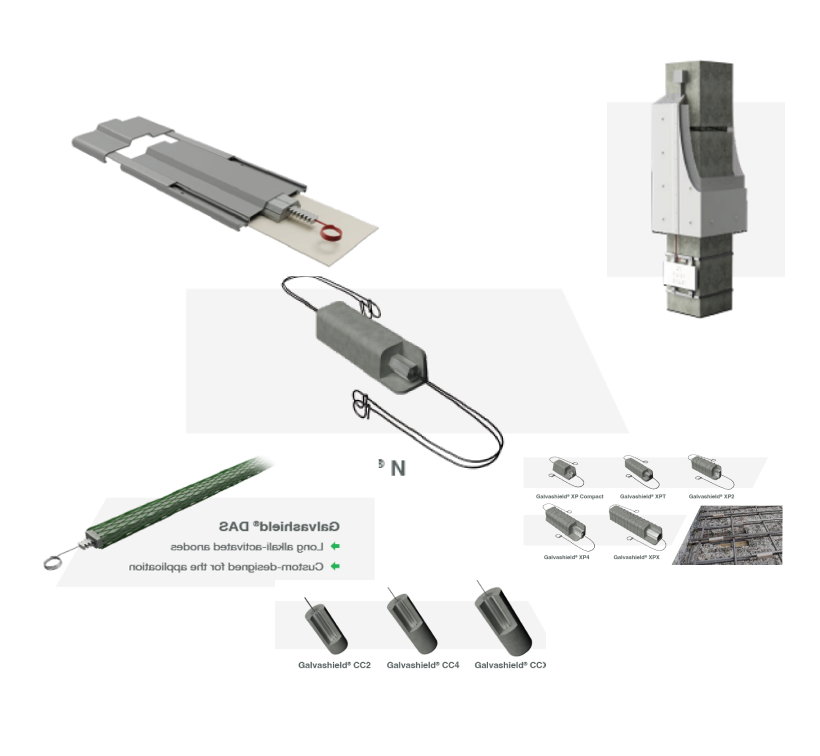
Radhe Structorepair Pvt Ltd jointly with M/s Vector Corrosion Technologies, Canada is pleased to introduce long term solution to concrete repair over frequent repairs by way of electro-chemical corrosion mitigation methods, which delivers protective current to the reinforcing steel. It shifts the potential of the steel to more negative value producing hydroxyl ions (OH-), which increases alkalinity of the concrete surrounding rebar and reduce chloride ion content at the level of steel over time.
Corrosion of reinforcement followed by spalling in RCC structure is the biggest cause of structure damage. Hence, concrete corrosion control and management is vital aspect of maintaining the integrity and durability of the old & new concrete structures. This corrosion, if not treated, can lead to structural damage, and reduce service life of the project. Controlling and Managing corrosion is a crucial to ensure the longevity and safety of the structures.


There are many of the factors which affects durability of concrete mainly w/c Ratio, Quality of concrete, curing practices employed, Shrinkage & Cracking of concrete, quality of admixture used, thickness of cover concrete and finally surrounding environment. Fresh concrete is highly alkaline which protects reinforcement bars by forming a thin passivating oxide layer on top of it. Once passivating layer is damaged due to aggressive environment, reinforcement bars are prone to corrode
With the increasing cost of materials, labour, plant & equipment’s, clients / owners / consultants are looking for a solution, which can ensure long lasting repair & protection with an extended life of say 15-30 yrs instead of spending at every 3-4 yrs.


Corrosion of reinforcing steel is an electrochemical reaction. Corrosion rate is influenced by various factors including chloride ion content, pH level, concrete permeability, and availability of moisture in the concrete. For corrosion to initiate in RCC, four elements are required ie. An anode, a cathode, ionic continuity between anode & cathode via electrolyte and an electrical connection between anode & cathode.
In conventional practice of concrete repair, when a spalled / damaged / cracked concrete needs repairs, we use high pH of fresh mortar / concrete. In such situation, repaired patch is chloride free but rest of the reinforcement bars remains in contact with chloride contaminated and / carbonated concrete. In such situation, corrosion in adjacent areas of repaired patch will get accelerated due to differential corrosion potential. Hence, we get patch over patch, which is called as “Halo Effect’. Hence, when corrosion problems are encountered in a repair situation, the chloride ion content and depth of carbonation in the existing concrete should be first determined.
